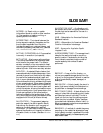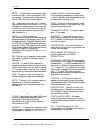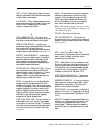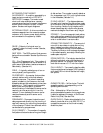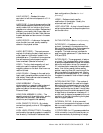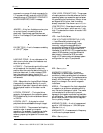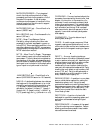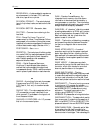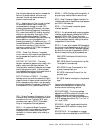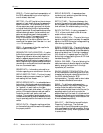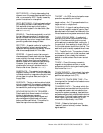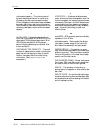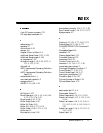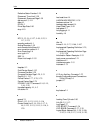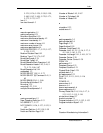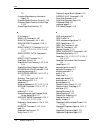
Glossary
Maxtor Atlas 10K III 18/36/73 GB Ultra160 SCSI G-9
that multiple disks can be used to increase the
amount of stored material, and that once
removed, the disk can be stored away to
prevent unauthorized use.
RLL – Abbreviation for Run Length Limited.
An advanced method used to encode (or
compress) data for storage on a disk. RLL
encoding stores almost 50 percent more data
than MFM (Modified Frequency Modulation).
RLL code improves MFM code by encoding
data bits in groups rather than singly. Many
encoding schemes are possible. The best
achieve optimum values of code rates, clocking,
power spectrum, error propagation and
encoding complexity. A number pair (e.g., 1,7)
is usually stated with RLL references. It refers to
the minimum number of 0;s(1) and the
maximum number of 0's (7) that can separate
data 1's stored on the disk.
ROM – Read-Only Memory. Integrated
circuit memory chip containing programs that
can be accessed and read but can not be
modified.
ROTARY ACTUATOR – The rotary
actuator replaces the stepper motor used in the
past by many hard disk manufacturers. The
rotary actuator is perfectly balanced and rotates
around a single pivot point. It allows closed-
loop feedback positioning of the heads, which is
more accurate than stepper motors.
ROTATIONAL LATENCY – The delay
between when the controller starts looking for
a specific block of data on a track and when that
block rotates around to where it can be read by
the read/write head. On average, it is half of the
time needed for a full rotation (about 8 ms.).
SCA – Single Connector Attachment. A drive
connector that combines the signal and power
connectors into one. Typically, SCA-type
connectors are used in RAID (Redundant
Array of Inexpensive Devices) systems.
SCA-2 – An improved Single Connector
Attachment that incorporates two electrostatic
discharge (ESD) pins on either end of the
connector to improve safety when making a
connection.
SCAM-1 – SCSI Configured Automatically. A
plug-and-play method used in some drives.
SCSI – Small Computer System Interface. An
interface designed for Apple Macintosh systems
and UNIX workstations.
SCSI-1 – The first small computer system
interface standard.
SCSI-2 – An enhanced small computer system
interface as defined and published by ANSI in
standard X3.131-1994. One of the major
features of SCSI-2 is integrating the controller
into the peripheral device, making the device
independent of the initiator.
SCSI-3 – A new set of related ANSI standards
are currently under development by the X3T10
committee. The old SCSI-2 standard has been
divided into a new set of standards for SCSI-3.
Some of these [working draft] standards are:
SAM (SCSI Architecture Model) for the
architecture;
SBC (SCSI Block Commands) for the disk
drive specific command set.
SPC (SCSI Primary Commands) for the
primary command set; and
SIP (SCSI Interlocked Protocol) for the
protocol layer;
SPI (SCSI Parallel Interface) for the physical
layer;
Layering the standards documents in this
manner allows substitution of parts of the
structure as new technology arrives.
SCSI ADDRESS – The unique address
assigned to a SCSI bus device. Normally, the
address is assigned and set during system
installation with priority being a consideration.
A SCSI address is a value of 0 to 7 (or 0 to 15
for “wide” SCSI).
SCSI BUS – A multi-signal parallel bus that
interconnects SCSI devices in a daisy-chain
fashion.
SCSI DEVICE – A host adapter or a target
controller that can be attached to the SCSI bus.



